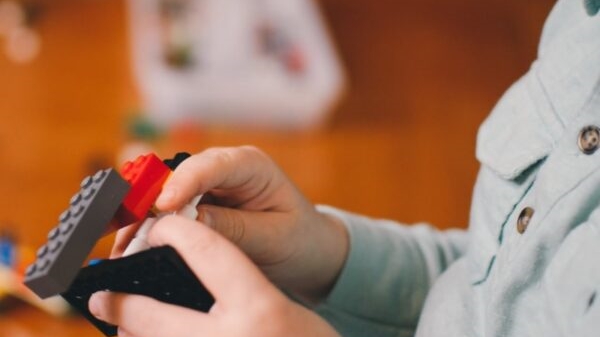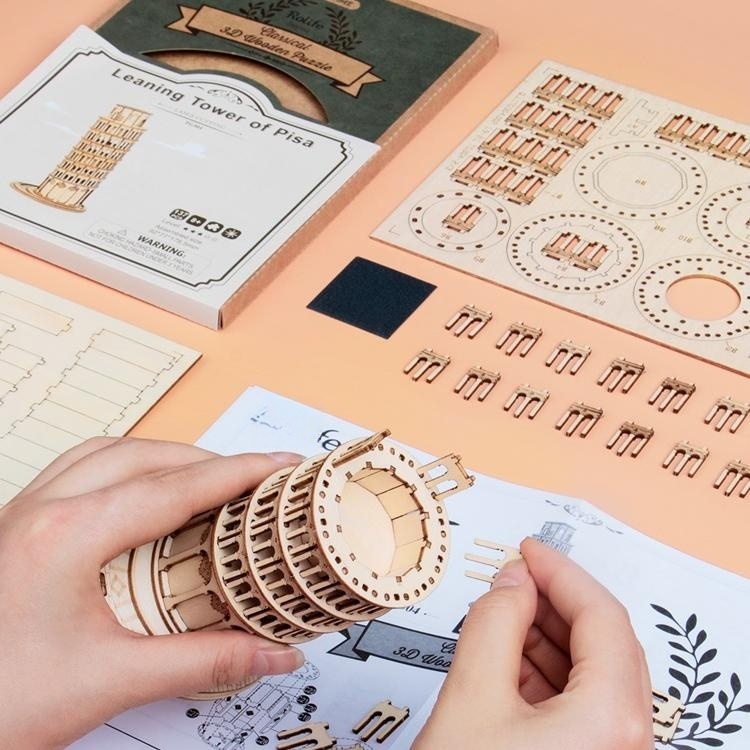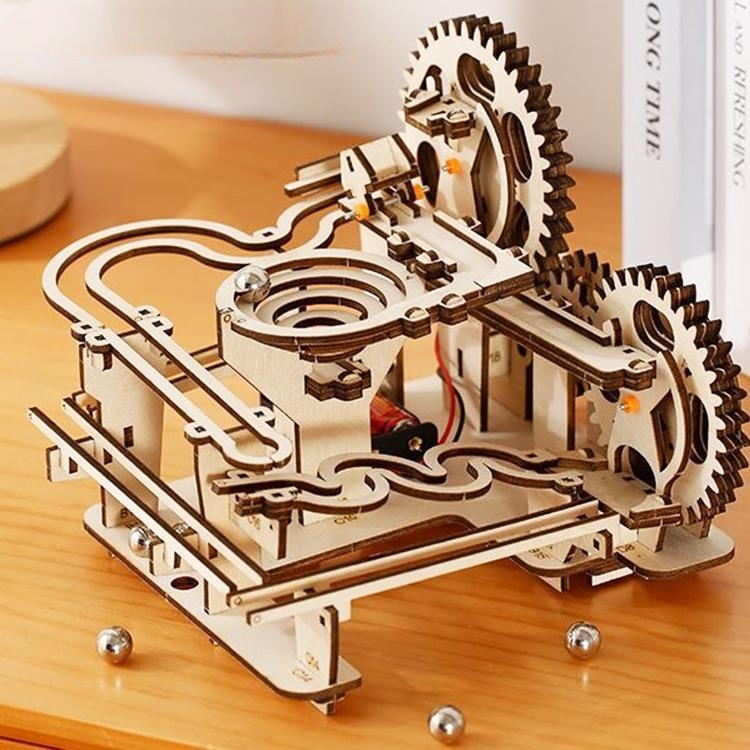
How To Add Storylines To Your Wooden Jigsaw Puzzle: A Creative Guide
Imagine a wooden jigsaw puzzle where each piece is more than a part of an image; it’s a chapter in a captivating story waiting to

Wooden puzzles have been around for centuries, providing fun and engaging challenges for both children and adults.
In recent years, intricate and complex 3D wooden puzzles have become increasingly popular among adults looking for screen-free activities that stimulate the mind.
Assembling these 3D puzzles made of intricately cut wood shapes provides a wide array of benefits for the adult puzzler.

Solving 3D puzzles enhances spatial reasoning, improves short-term memory, promotes creative problem-solving, and provides age-related cognitive training.
Putting together a 3D wooden puzzle requires visualizing and manipulating shapes in three dimensions. Studying and rotating the interlocking pieces engages and enhances spatial reasoning skills.
Spatial ability is important for fields like engineering and science. Using 3D puzzles boosts skills like mental rotation, spatial visualization, and visual processing. Solving multi-faceted challenges keeps these cognitive abilities sharp.
Research indicates that interacting with 3D objects activates the parietal lobe region of the brain, which handles spatial perception and navigation.
The parietal lobe integrates visual, sensory, and coordinate information needed for spatial reasoning. Challenging this area with rotating and reorienting 3D wooden pieces leads to greater aptitude in spatial relation skills over time.
Enhanced spatial skills gained from working on 3D wooden puzzles translate to improved abilities in fields dependent on spatial reasoning like architecture, mechanics, athletes, pilots, artists, and engineers.
The 3D visual manipulation helps with the technical skills needed for activities like reading blueprints, building models, and operating equipment. Brain training transfers to navigating real-world physical environments.
To successfully assemble the small pieces of a 3D wooden puzzle, puzzlers must utilize short-term or working memory. This involves holding the shapes and orientations of multiple pieces in mind while manipulating and fitting them together.
The process taxes and strengthens short-term memory capacity, improving concentration and focus. Enhanced working memory translates to better retention and fluid thinking.
Working memory is vital for a variety of cognitive tasks from doing math in your head to following driving directions. Good working memory allows holding information in mind while applying it to execute tasks.
3D wooden puzzles exercise this “mental workspace”, letting puzzlers flex this mental “muscle”. The more puzzles work, the greater the short-term memory gains.
Improved short-term memory capacity also helps with learning new skills or information. More data can be held in the mental workspace when memory is strengthened.
Multiple pieces of information can be correlated and synthesized when temporary memory function is enhanced through activities like completing 3D wooden puzzles.
Assembling a 3D wooden puzzle requires evaluating and attempting multiple solutions to achieve the end goal. Trying different approaches and strategies flexes creative problem-solving skills.
When pieces do not easily fit together, out-of-the-box solutions must be found. Improving these cognitive skills leads to better decision-making and innovative thinking.
Unlike a jigsaw puzzle with a picture for reference, 3D wooden puzzles require visualizing the end shape and strategizing to construct it from discreet wooden pieces.
This demands fluid thinking, mental flexibility, and the ability to recognize multiple solutions. When standard approaches do not work, creative problem-solving kicks in to analyze the pieces from new angles.
The open-ended, tactile nature of 3D wooden puzzles provides space for unrestricted creativity. There is no single right or wrong way to assemble the parts together. This spurs innovation, engagement, and resourcefulness.
Flexing creative problem-solving muscles in an enjoyable activity like puzzling has positive impacts on real-world workplace creativity, ideation, and clever solutions.
Studies indicate that engaging in mentally stimulating leisure activities can help preserve cognitive skills as we age.
Challenging the brain with 3D wooden puzzle assembly promotes executive functioning, working memory, processing speed, and reasoning. This brain training can contribute to maintaining a sharp mind into older age.
Research has found correlations between seniors who engage in puzzles and improved mental speed and memory retention. Working on spatial challenges helps aging brains generate new connections and combats the loss of grey matter.
Puzzling may protect against cognitive decline by building up a “cognitive reserve”. The more a brain is challenged, the more resilient it remains.
3D wooden puzzles provide ideal cognitive exercise for older adults. The puzzles target skills like mental rotation and spatial reasoning that may decline more rapidly with age.
Seniors are motivated by the hands-on nature and sense of satisfaction from completing the 3D models. Using 3D puzzles for brain training provides engagement along with mental sharpening.

Puzzle-solving lowers stress and anxiety, improves hand-eye coordination and dexterity, and provides a sense of achievement and satisfaction.
Research shows that engaging in puzzles decreases stress and anxiety levels. The hands-on process of slowly assembling the pieces leads to a relaxed, meditative state as focus zeros in on the present moment.
The reward of pieces fitting together triggers the brain’s dopamine, providing great satisfaction. 3D puzzles deliver an absorbing, calming break from technology and stressors.
The goal-oriented nature of puzzles provides a positive distraction from anxious thoughts. Fitting together the wooden pieces requires sustained attention, bringing a mindful focus to the current activity.
The engagement in puzzle assembly shifts negative ruminations to constructive action-oriented concentration. This flow state lowers stress by producing alpha brain waves associated with relaxation.
Studies demonstrate puzzles result in decreased heart rates and blood pressure readings along with self-reported lower anxiety levels. The cognitive engagement combined with quiet focus provides an ideal stress-busting time-out.
The activity lets the mind recharge as adrenaline and cortisol levels drop. Puzzling offers an accessible way to take a calming mental break from daily pressures.
Completing intricate 3D wooden puzzles involves manipulating small pieces to find the right angles and fit. This improves manual dexterity, fine motor skills, and hand-eye coordination.
The hands and fingers become more adroit and skillful with practice. Enhanced dexterity provides benefits for everyday activities from using utensils to playing musical instruments.
The parts manipulation required for puzzle assembly involves precise hand motions and exact finger placement. Moving the coordinating wooden pieces challenges fine motor control.
As hand-eye coordination improves, speed and accuracy of manipulation increase. The bilateral action engages hands working together for skill building.
Enhanced manual dexterity aids in activities of daily living, from buttoning shirts to using tools. The skills translate to hobbies like playing sports or crafting models.
Physical dexterity declines with age, so exercises like manipulating 3D puzzle pieces help older adults maintain mobility and flexibility in the hands and fingers longer. The practice increases coordination for tasks requiring precise hand and finger movements.
Finishing a challenging 3D puzzle brings a great sense of accomplishment and satisfaction. Puzzlers must be tenacious, trying different strategies to achieve the end result.
Displaying a completed puzzle serves as a reminder of the effort it took to problem-solve and build the multidimensional shape. A sense of achievement does wonders for self-confidence and morale.
Self-efficacy and motivation increase when efforts lead to mastery of a complex challenge. Completing a 3D wooden puzzle provides positive reinforcement of perseverance and mental stamina.
Each finished puzzle boosts belief in one’s own abilities to reason through problems methodically. Losing oneself to an engaging activity that leads to a tangible end product creates deep fulfillment.
Knowing a puzzle was assembled through one’s own motivation and grit provides an uplifting sense of empowerment. The ability to point to a fully created 3D form built with one’s own hands fuels pride and self-assurance.
Sharing photos of completed wooden puzzles via social media multiplies the recognition of a job well done. Displaying finished 3D puzzles provides visual reminders of a mental strong suit.
Puzzle-solving bonds generations are great for social groups, and foster a culture of learning and mentorship among participants.
Grandparents often pass down a love of puzzling to younger generations. Families can work together on 3D wooden puzzles, combining skills and knowledge. This play builds stronger intergenerational connections.
Young puzzlers improve spatial skills while older ones stay mentally sharp in a social setting. Completing a puzzle as a family creates lasting memories.
Youth can learn patience, persistence, and sportsmanship from older mentors as they collaborate. Elders can feel a sense of purpose by teaching specialized skills like strategizing, sorting pieces, and assembling sections.
They also stay cognitively engaged interacting with young minds. Conversation flows naturally over a shared hands-on activity.
Laughing together over tricky pieces and celebrating collective accomplishments strengthens family ties. Young people gain confidence when trusted with important puzzle tasks.
Completing a challenging activity as a team allows different generations to appreciate one another’s strengths. Displaying finished puzzles evokes nostalgia, making it a keepsake.
3D wooden puzzles are made for an engaging group activity. Friends can gather for a screen-free evening of puzzling while enjoying each other’s company.
Groups can collaborate and communicate to assemble the pieces. Puzzle parties provide social stimulation and camaraderie centered around a creative activity.
More complicated 3D wooden puzzles with higher piece counts are ideal for social gatherings. Different puzzlers can work on sections together like the border, frame, or base layers.
The conversations flow naturally as participants help each other with tricky spots. Laughing over mistakes and aha moments, when pieces fit, fosters a playful mood.
The shared hands-on activity generates meaningful connections in a way screens do not. Groups can also compete in friendly puzzle contests to see who can construct their section the fastest.
Puzzle assembly makes for lively interactions as peers teach, tease, and tempt each other’s puzzle skills. The collective builders share pride when the last piece completes the 3D model.
More experienced puzzlers can mentor novices, teaching strategies and techniques. Knowledge is passed down in an engaging way.
Teachers can use 3D wooden puzzles to demonstrate concepts like geometry, spatial reasoning, and physics with hands-on learning tools. Puzzle play brings people together through cooperative play, mentoring, and discovery.
As a fun group activity, 3D wooden puzzles make learning interactive. Mentors can share tips like sorting border pieces first, looking for color patterns, or working section by section.
New puzzlers pick up skills through active modeling, not just being told. Teachers can invent physics, engineering, and math puzzles tailored to their curriculum.
The multi-generational appeal allows less experienced youngsters to learn from older puzzlers. Elders enjoy sharing their expertise and reminiscing over favorite puzzles from their youth.
Mentoring relationships form naturally through shared hands-on connections. Bonds grow as proteges demonstrate growth under their tutelage.

Intricately designed 3D wooden puzzles provide engaging challenges that benefit the mind and body. They enhance spatial skills, memory, problem-solving, and dexterity while reducing stress.
Puzzles foster social bonds across generations and skill levels. As a screen-free activity, they flex cognitive abilities and creative thinking. For these multidimensional benefits, 3D wooden puzzles are an ideal pastime for adults.
The research is clear that regularly exercising the brain with activities like 3D wooden puzzles promotes better mental functioning.
Challenging cognitive skills in an enjoyable way provides associations, flexibility, and speed to thinking abilities. Incorporating 3D puzzles into leisure time is key for both short and long-term brain health.


Imagine a wooden jigsaw puzzle where each piece is more than a part of an image; it’s a chapter in a captivating story waiting to

When choosing the right puzzle box(wooden puzzle boxes or paper one) for your toddler, it’s essential to consider the materials’ properties and how they align

Embark on a journey to unravel the nuanced distinctions between two beloved genres of puzzles: plain wooden puzzles and 3d wooden puzzles. In this comprehensive

Imagine your wooden jigsaw puzzle not just as a piece to be solved but as an interactive journey that engages all your senses. This guide

Imagine a wooden jigsaw puzzle where each piece is more than a part of an image; it’s a chapter in a captivating story waiting to

When choosing the right puzzle box(wooden puzzle boxes or paper one) for your toddler, it’s essential to consider the materials’ properties and how they align

Embark on a journey to unravel the nuanced distinctions between two beloved genres of puzzles: plain wooden puzzles and 3d wooden puzzles. In this comprehensive

Imagine your wooden jigsaw puzzle not just as a piece to be solved but as an interactive journey that engages all your senses. This guide
Copyright © 2024 woodcraft3dpuzzles. All Rights Reserved.